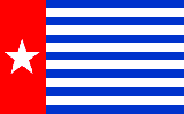http://www.thejakartapost.com/news/2014/11/27/expedition-reveals-biodiversity-w-papua.html
An expedition which aimed to collect initial data on biodiversity in West Papua has revealed the mysteries of Lengguru, an area that consists of limestone formations called ‘karst’, as a mosaic of natural ecosystems in the province.
The Lengguru 2014 Expedition was aimed at recognizing Lengguru’s biodiversity and potential as well as its relation to the evolution process according to certain scientific points of view such as molecular, ecology, taxonomy and terrestrial matters.
“In Lengguru the typical natural landscape is a habitat of a number of natural labyrinths located both on the land surface and underground as well as in forest areas,” said Witjaksono, head of the biological research center of the Indonesian Institute of Sciences (LIPI), in a statement made available to The Jakarta Post on Thursday.
Among the ecosystems found in Lengguru were karren, polje, sump, river, endorheic lake, doline, cave and an underground river system.
LIPI chairman Iskandar Zulkarnain said the expedition involved around 50 research staff and technicians from Indonesia and 27 foreign researchers and technicians.
“This partnership will boost both the capacity and capability of Indonesian researchers in their respective fields of expertise. This expedition is one of the biggest scientific projects in Indonesia,” he said of the expedition, which took place from Oct.17 to Nov.20.
Other institutions involved in the Lengguru 2014 Expedition were L’Institut de Rechere pour le Developpement (IRD), Sorong Fisheries Academy (APSOR), the Kaimana administration’s fisheries and maritime affairs agency, Papua State University, the University of Cendrawasih and the University of Musamus.
Up till now, no comprehensive record of zoological and botanic diversity in Lengguru had been found either in Indonesia or abroad, according to LIPI.
“Geologically, Lengguru has a very significant role in the biology-diversification process which allows the area to be a host to hundreds of the oldest endemic species in Papua and Papua New Guinea,” said Witjaksono, adding that as a scientific expedition, the Lengguru 2014 Expedition was also an educative and cultural project.
